Delfina
Delettrez
Fendi
The newly appointed executive shares her learnings from a multi-hyphenate and multi-faceted career.
Written by: Jessica Iredale
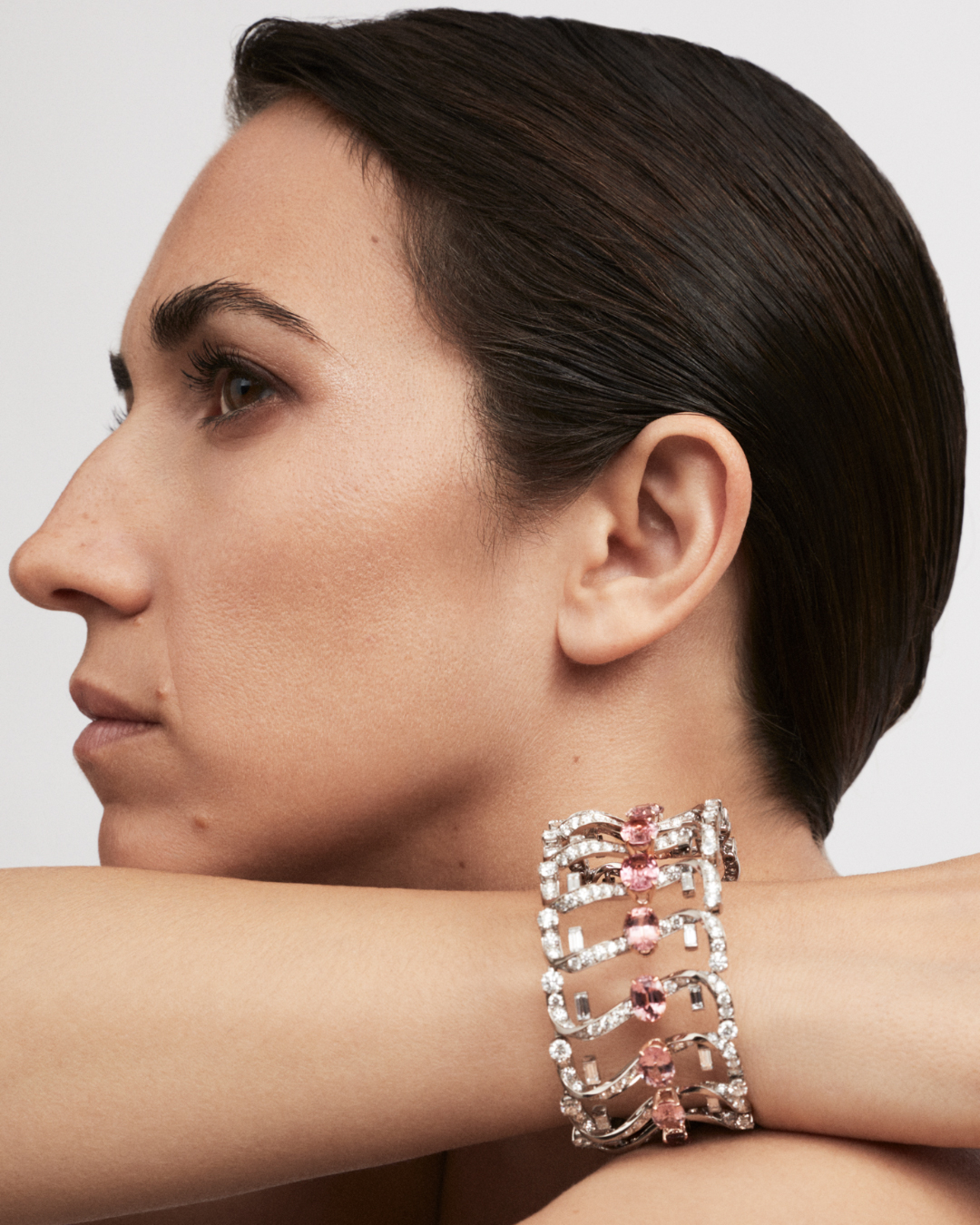
Delfina Delettrez Fendi has always been surrounded by jewelry. Her first piece was a birthday gift, an aquamarine stone, from her grandmother, on the day she was born in 1987. “Maybe it was a premonition for a little girl named Delfina,” says Delettrez Fendi, noting that Delfina translates to “dolphin” in English. The power of gems and jewelry has stayed with her, fueling her creativity and career through Delettrez Fendi’s own jewelry collection, which launched in 2007 when she was just 20 years old, to her appointment as Fendi’s first Artistic Director of High Jewelry last year.
Delettrez Fendi’s first haute joaillerie design for Fendi was teased last year: Fendi Flavus, a parure divided into three pieces including a cascading necklace, earrings and a cocktail ring set with four natural fancy vivid yellow diamonds imbued with deep meaning.
“They were all coming from the same alluvial source with a very special, intense and bright yellow color saturation,” Delettrez Fendi says. “They were a tribute to our family and to the fourth generation that I represent.”
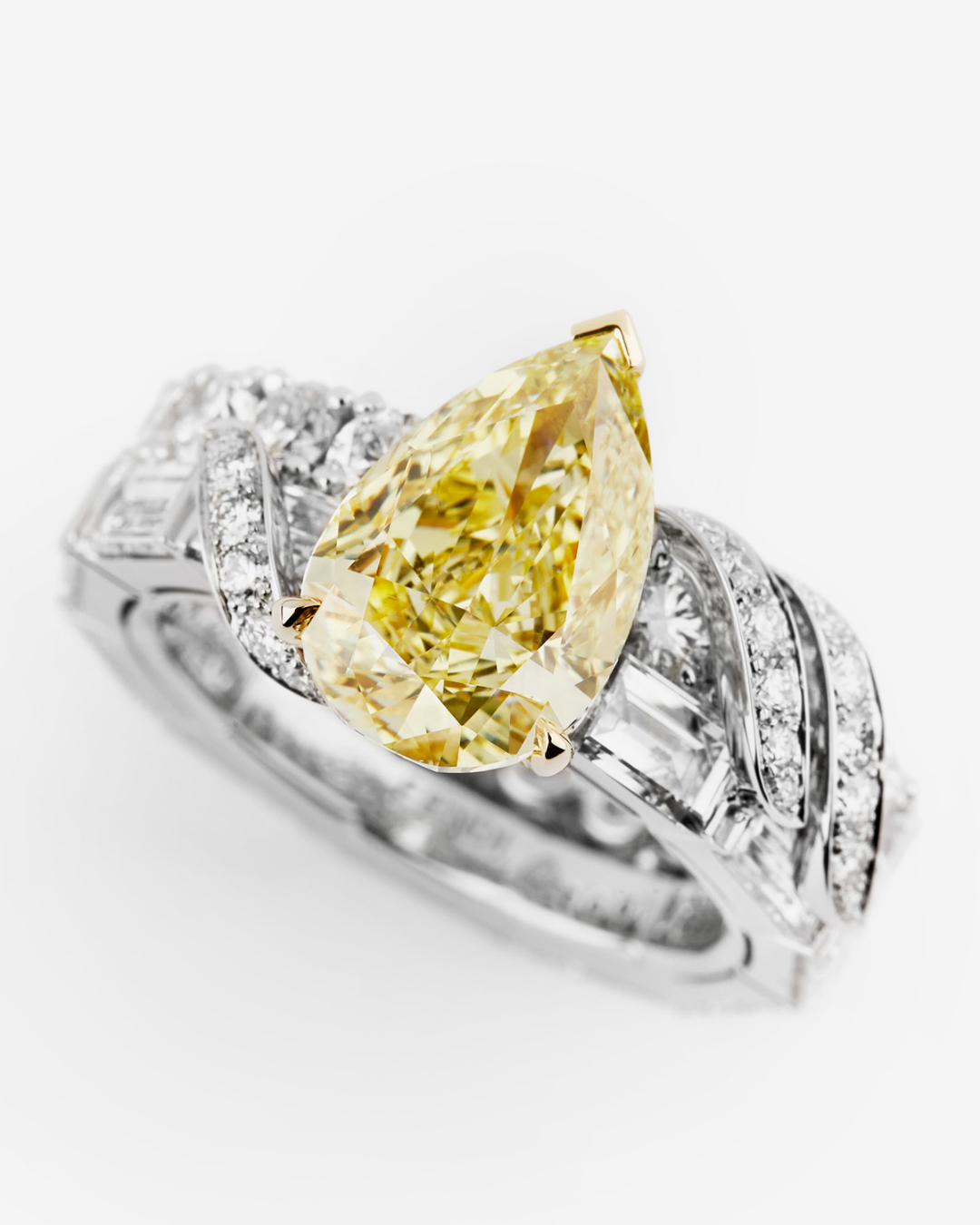
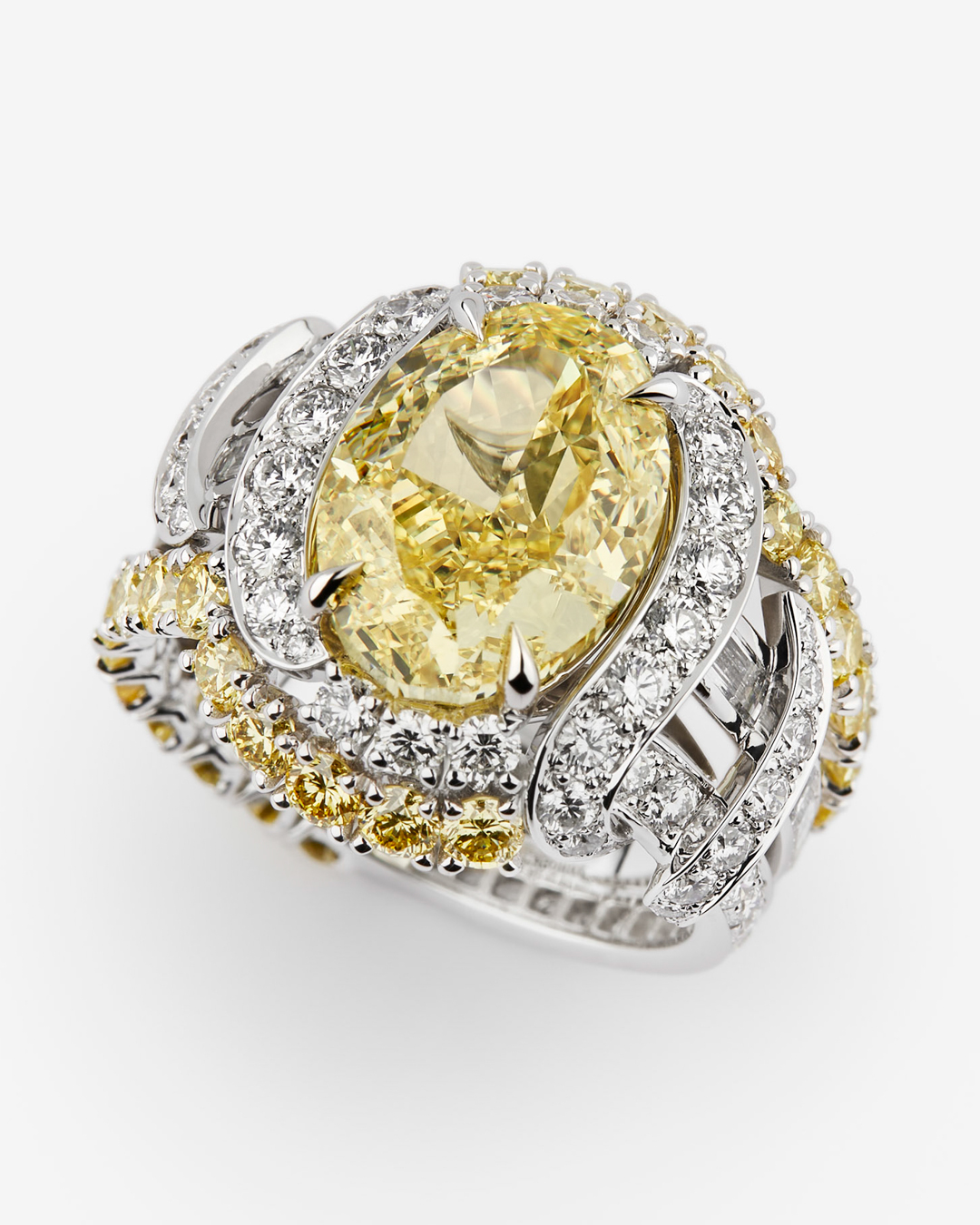
The yellow diamonds exuded the warm, golden hue of Fendi’s signature shade of yellow, as well as the sunsets of Rome, where the house is based. The tease was a great success; the entire parure was sold at the first appointment to an undisclosed client, whetting the appetite for Delettrez Fendi’s first full high jewelry collection, which finally debuted in July during the Paris Haute Couture collections.
Fendi Triptych is a spectacular 30 piece collection divided into three chapters—Roma Rosa, Gioiello Giallo and Bianco Brillante. Delettrez Fendi considers three to be a magic number for Fendi. “The rule of division in three parts,” she says. It’s a guiding principle for writing, speaking, mathematics, imagery, photography and a multitude of creative and philosophical disciplines wherein the logic lies that three is the smallest number required to make a pattern.
Dividing things into three makes them more digestible, understandable and pleasing to the human mind and eye. The concept can also be interpreted and applied to the creative triumvirate now in place at Fendi between Delettrez Fendi and her mother Silvia Venturini Fendi, who has overseen accessories design for years, and Kim Jones, who was named Creative Director of Ready-to-Wear and Couture in 2020.
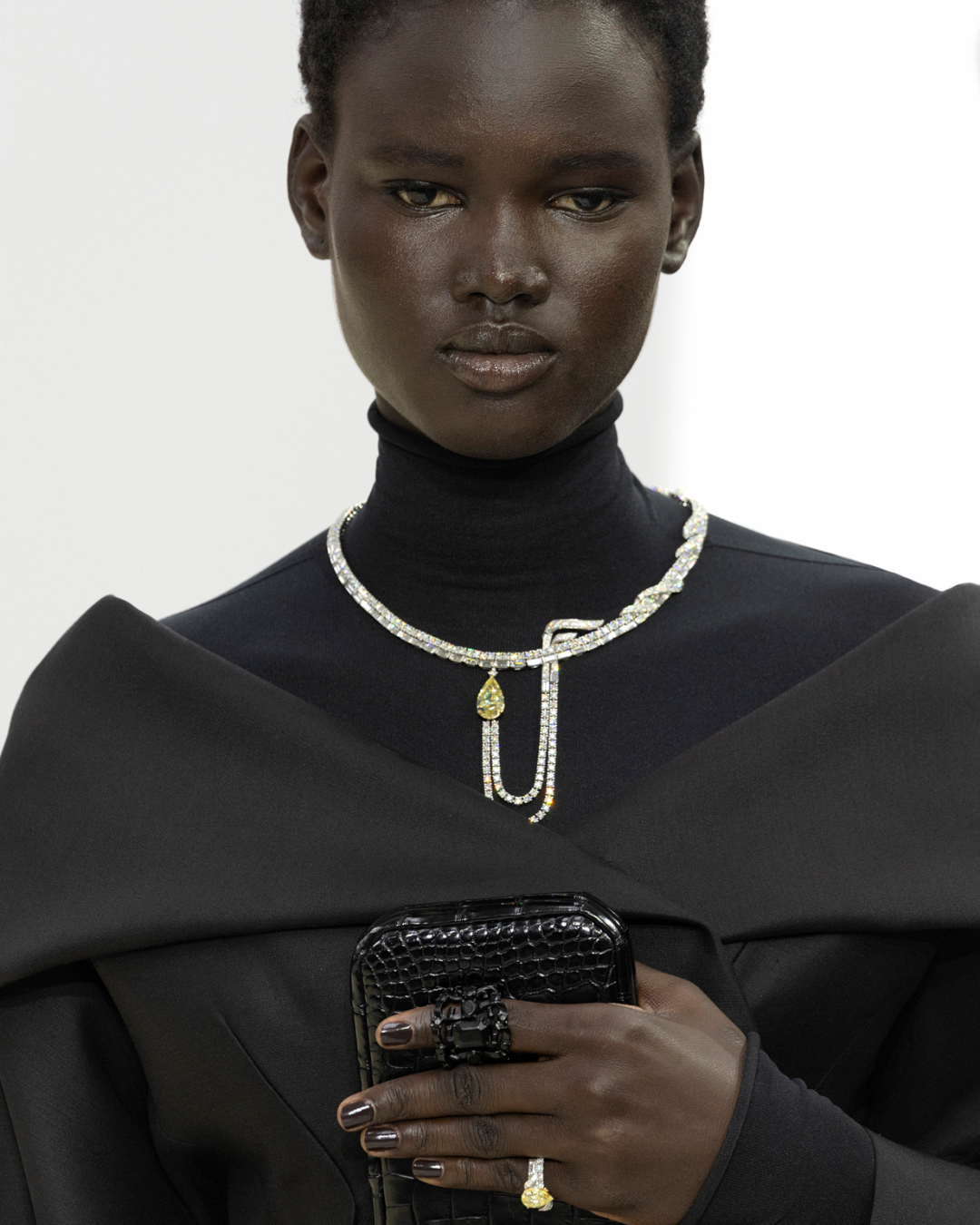
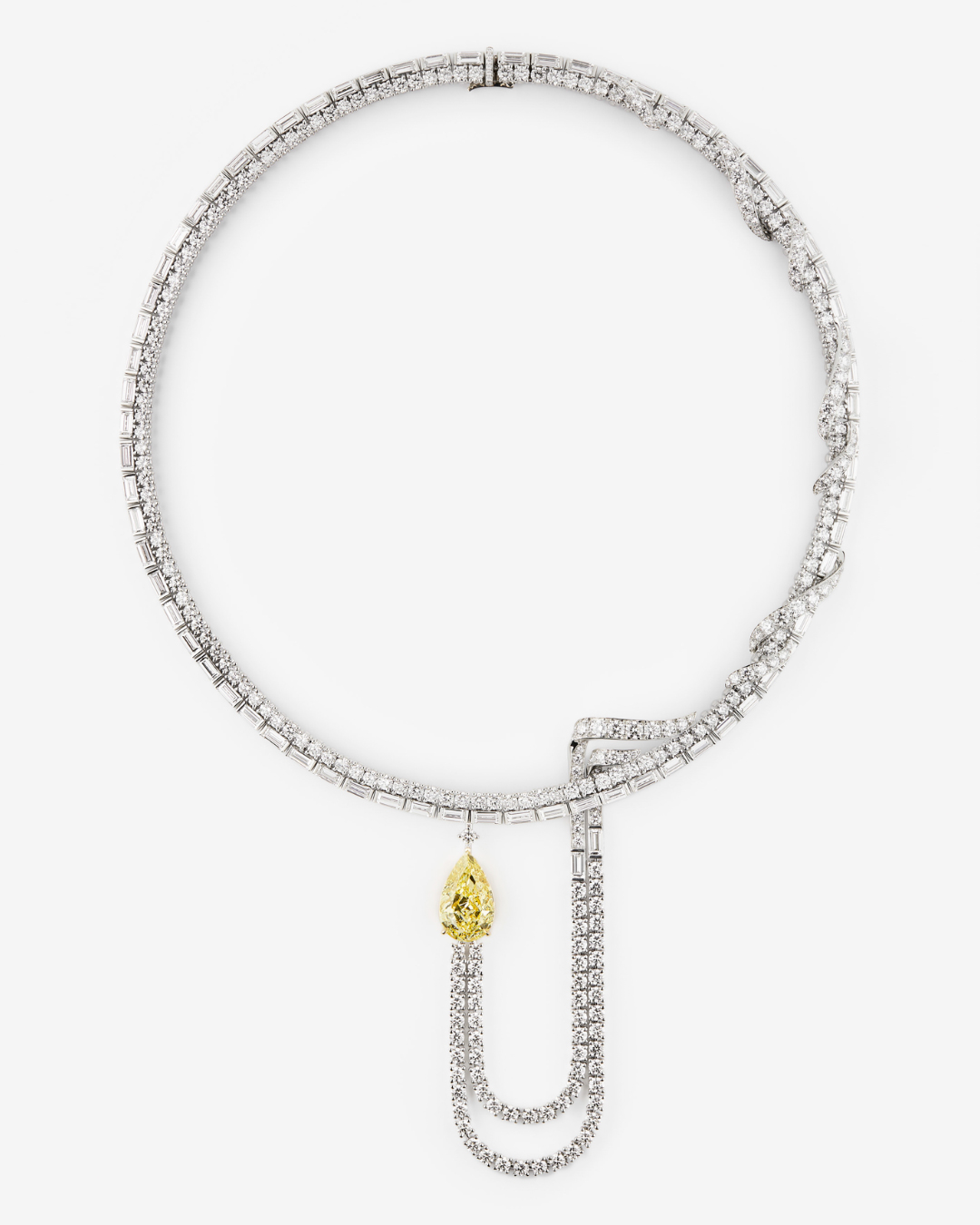
Delettrez Fendi had contributed designs to the Fendi oeuvre in the past—accessories in 2014, men’s fine watches in 2016 and the Fendi O’Lock collection, which has become a key logo signifier for the house in 2021. It was Jones’ idea to formalize her role as Artistic Director of High Jewelry, which brought her full circle after 15 years of running her own jewelry collection known for its playfully witty surrealist codes, such as bejeweled eyes and lips, ear cuffs and single statement earrings (she was an early proponent of the trend). “It is an honor for me,” says Delettrez Fendi of her new role at her family house. “I decided to explore the category of jewelry that was almost unknown to Fendi, maybe unconsciously to find my own path. Now, to be here at Fendi as artistic director of jewelry gives me the opportunity to bring in all my know-how learned in many years of founding my own brand and launch new adventures, adding new pictures to the family album.”

You can say my mother is the talking archive and I am the walking archive as I love to wear vintage Fendi pieces and dive in the Fendi archives.
When asked how the rule of thirds applies to the design process between three such creative individuals, each with his or her own point of view, Delettrez Fendi says it’s both collaborative and independent. “We talk a lot,” she says. “In this sense, Kim is very Italian. He likes to have long conversations and know everything about the Fendi family and maison heritage. We make our worlds fuse together. You can say my mother is the talking archive and I am the walking archive as I love to wear vintage Fendi pieces and dive in the Fendi archives.”

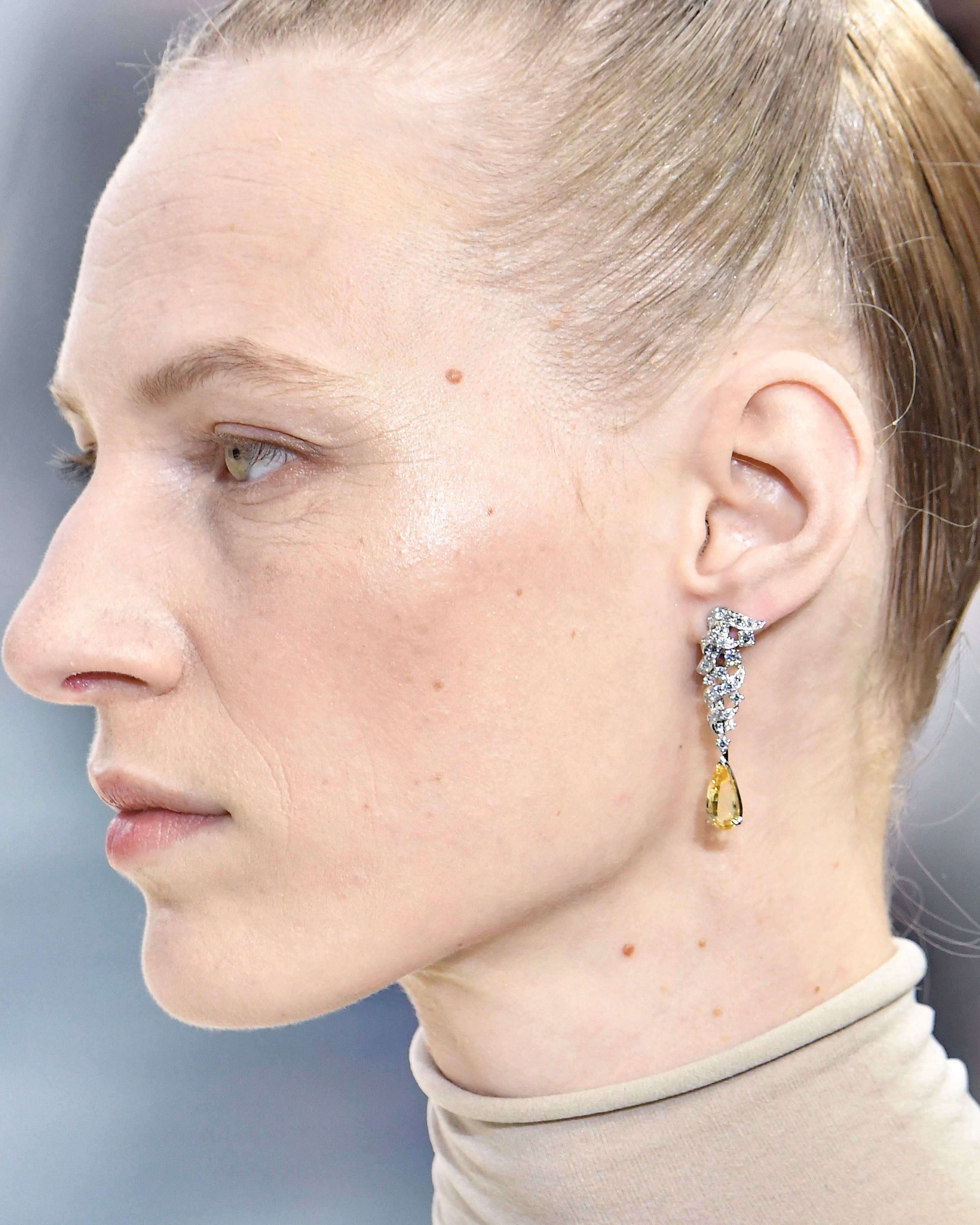
The visions of Jones, Venturini Fendi and Delettrez Fendi converged in July during the Paris Haute Couture shows. Jones’ collection was inspired by high jewelry, the colors taken from flesh tones as well as stones—black diamonds, rubies and sapphires. The bags were like jewelry boxes, clutched close to the heart “as when you hold something very precious to you,” says Delettrez Fendi. The minimalist silhouettes of the clothes and bags made a divine backdrop for her high jewelry debut to shine; the collection’s earrings, cocktail rings, elaborate necklace and brooches providxing jaw-dropping accents on the runway.
Triptych is centered around brilliant natural white diamonds complemented and contrasted with stones that reflect the iconic Fendi yellow and rose, a color that has become increasingly linked to the house and its halo of powerful, feminine energy. Fendi was founded by Adele and Edoardo Fendi in Rome in 1925, where they expanded from a small boutique into a fur and handbag business and eventually a full fashion and couture house that was acquired by LVMH in 2000. The couple had five daughters, including Delettrez Fendi’s grandmother Anna, who worked at the house along with her sisters for decades. Venturini Fendi and Delettrez Fendi represent the third and fourth generation of Fendi’s steering the creative helm of the house.
Triptych’s pieces are loaded with exquisitely rendered references to the house iconography. For example, the FF logo, considered a family crest by Delettrez Fendi, is hidden in plain sight, constructed in combinations of baguette-cut stones that nod to the famous Fendi Baguette handbag designed by her mother in 1997. The FF motif appears and disappears on necklaces, bracelets, earrings and rings expressed in homage to the cursive Karligraphy motif created in 1981 by Karl Lagerfeld, who held the position of Creative Director of the house for 54 years until his death in 2019. “It is like a crescendo of F that becomes an illusion, or the F wraps around the neck, sometimes very futuristic,” says Delettrez Fendi. On a meta level, the surprise meanings and messages built into the pieces wink at another famous Fendi design, the Peekaboo bag. “You have to detect the logo unveiled as almost a treasure hunt, a secret code,” she says.
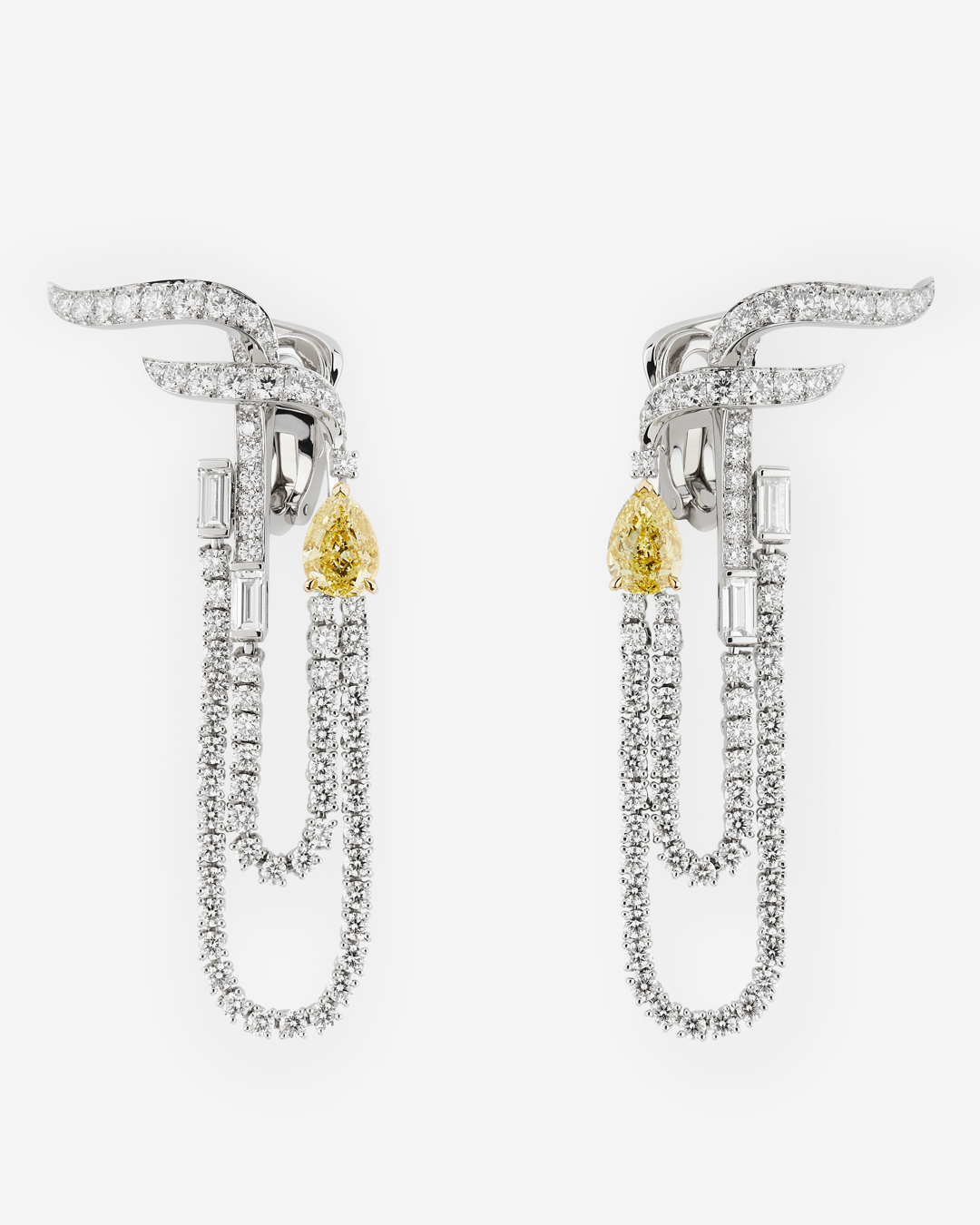
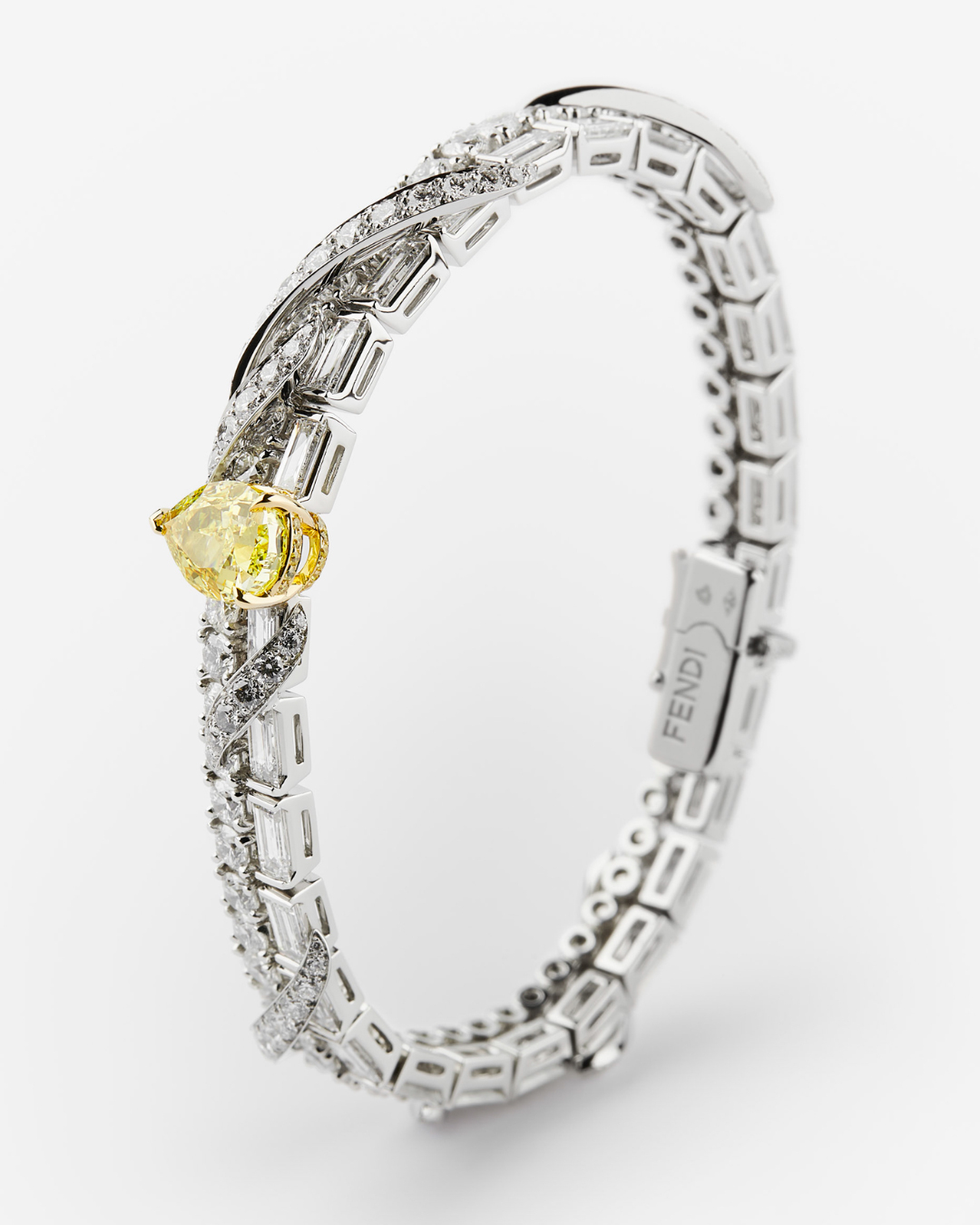
Speaking of treasure, one of the Triptych’s most exceptional pieces is from the Roma Rosa collection. The Undarum parure, an articulated portrait necklace done in a reversed FF cage construction that floats upon the décolleté in a helix of oval-cut spinels with an emerald-cut spinel centerpiece, features a historic acquisition of rose poudré pink spinels. “They were so special not only because of their incredible beauty and color but also because about 40 years were necessary to collect and pair them,” says Delettrez Fendi. “Such a large collection of spinels in this color palette can no longer be found. There is something fascinating and primordial in holding stones that took so many years to arrive to the surface. It is like selecting stars.”
READ THE ISSUE
`Only Natural Diamonds
Winter 2023/2024
